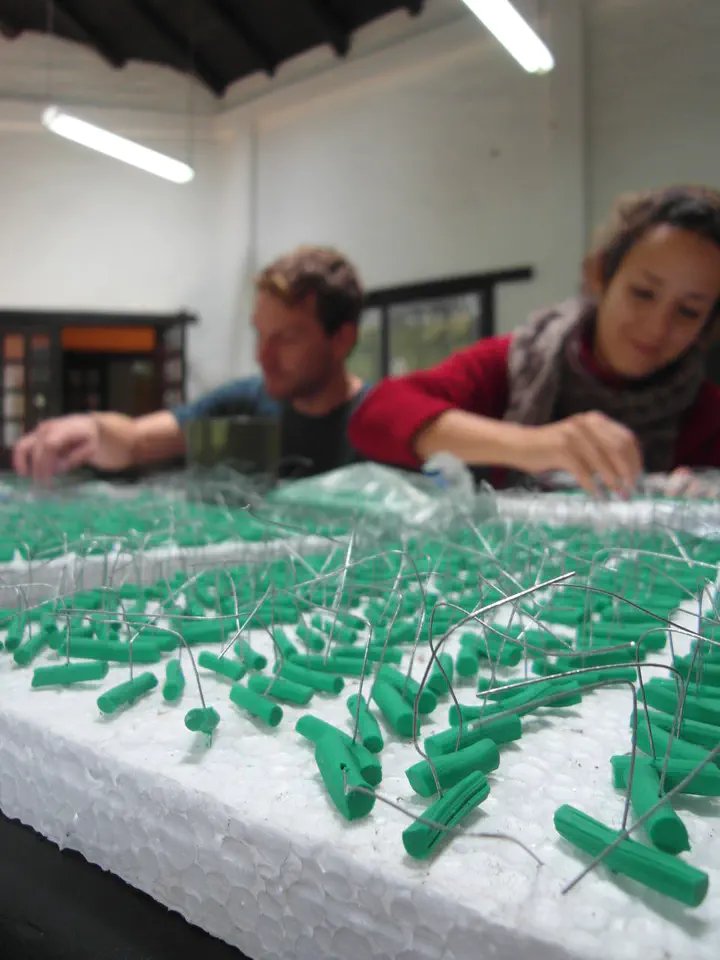Ants and artificial caterpillars as indicators of environmental change and ecosystem processes
 Artificial caterpillars (with Leonie Gruenfeld & Julian Mattes)
Artificial caterpillars (with Leonie Gruenfeld & Julian Mattes)Abstract
Worldwide, biodiversity declines due to global anthropogenic climate and land use change which can negatively affect the functioning of important ecosystem processes, e.g. pest control. To track and under-stand changes in biodiversity and of processes within ecosystems, effective tools that enable longterm monitoring are urgently needed. Here we introduce ants as indicator for ecological responses to climate changes and artificial caterpillars as indicator of predation on herbivorous arthropods as an important ecosystem process. The ant indicator is based on a baiting approach where bait tubes filled with different attractants are used to trap epigaeic ants. The species richness of ants can be used to detect changes of the composition of ant species with changing environmental conditions. The artificial caterpillar indicator is based on dummy caterpillars that can be easily prepared out of commercially available plasticine. Predators of herbivorous arthropods will confound the artificial caterpillars with real ones and leave their bite marks on the surface of the plasticine. These bite marks can be easily determined, making artificial caterpillars an effective tool to measure differences in the quantity and quality of the ecosystem process predation.